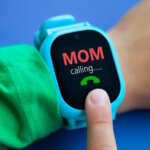






What Today’s Legos Tell Us About Childhood
This Instagram reel sums up what many people have shared with us over the years: As go Legos, so goes childhood.
Lego evolved from its bucket-of-bricks days — “You decide what to make, kid!”– to super-specific kits designed to be used once, by a kid following directions and making something perfect:
Hey, we bought our (giant) share of Bionicles and our kids LOVED them. But then the finished products stood sentry on the shelf, never deconstructed to the atomic level, in order to be built anew.
Curious to hear: What has been your Lego experience?
And if you’re thinking: Gee, I’d like my kids to do more free play — unstructured, kid-led– consider starting a Play Club, or asking your school to start one!



Just like Jenna’s comment with younger kids! Our kids have fun with the kits, because they choose ones that are at least a few years older than their ages for the challenge, and then play with the planned results, and then take them apart and build other vehicles, animals, etc. forever. The legos get mixed with all the others we have by color, and they use every possible variation (rectangles to specific pre-planned little pieces) to make their own things, building amazing structures of their own creation.
My kids love Legos. We have tons, mostly bought as sets. My teenagers like to build the sets and display them. My younger kids will build a set when they first get it and then take it apart and all the pieces go in our Lego bins, which are a bunch of drawers that have them organized by color. They come up with some pretty great stuff.
As an Adult Fan of LEGO (AFOL) and a dad of kids that have grown up and still love them into their teen years I have to totally disagree with the premise of this IG reel. Lego have ALWAYS come as sets! The original Lego was a city that you build. It’s always been ‘structured’ and included instructions but then was open to free imaginative play. That was (and is) the great thing about it- it allows you to create whatever you want. Want to build the set via the instructions? Great do that. Want to build your own creation (My Own Creation or MOC), great do that! Want to build something weird, wild and wacky, definitely do that too. I’ve taken modular sets and built a City of my own liking with a few of my own buildings mixed in. I’ve designed streets of my own design and now I’ve turned that into something I do for work where community member (adults AND kids) design and build their own street design. It’s incredible what people come up with when you say ‘take these standard pieces and some parameters and build whatever you want’. Creativity within existing structures/rules…that’s what most of our real world is and Lego provides that in so many ways. Plus the ability to take what is supposed to be used one way and use it in a totally new and different way; also where Lego exceeds.
The ‘big bucket of Lego’ is something that came along later, after the sets with instructions. Sure a lot of us end up with a bucket of them after sets get taken apart and that free form creation is great fun too but the idea that Lego is now changing and that is a symbol of our education system I totally disagree with.
Our challenge is that we live a solid half mile from any neighborhood and we have an only child. I’m fine if she had a friend to cruise around with but trying to talk her friend’s parents into letting them run around unsupervised is (apparently) like me asking if our kids can drive my car! It’s still a difficult “sell” in many communities. From my perspective, especially our Hispanic dominant community,
My kids love the sets and really enjoy following the directions, but I’ve found that they very quickly disassemble them and build new creations out of their own imaginations, often using the techniques they learned by following the directions. Someone above mentioned super specific pieces being frustrating, but my kids love the unique, specialized pieces more than any other, and they find incredibly creative ways to use them. I actually find that the bricks are used almost never. They really love Technic pieces, things that are jointed and move, etc.
I talk about this problem with Legos a lot! In fairness to my kids, they do take the sets apart, usually after a few weeks, and combine them with lots of other pieces to build things. The problem now is that because there are so many sets available, they think they need MORE even though they could play creatively for three lifetimes with all the pieces they already have.
My daughter loved the mini lego classic kits from the pharmacy when she was 3 – 4. After putting them together the first time with the instructions, she would add her own elements that built on (no pun intended) her obsession with architecture. She’s received lots of other Lego kits since then, all of which I find annoying because of the reasons stated in the post – especially with the addition of Lego “friends”. As the Lego pet daycare a friend got her for her birthday gathered dust on her shelf, I offered an ultimatum: my daughter either had to chuck the instructions, disassemble the whole thing and dump it in the communal Lego box after completing the design, or chuck the Lego entirely. Not wanting to lose her preferred toy, she opted for the former, with one exception: to keep the pages that showed how to set up the complex mechanisms that might be useful for vehicles. It doesn’t solve the problem of an excess of small and intricate pieces that may never be used again, or of “imagined-for-you” toys flooding the market but it has kept her starting from zero every time.
A year ago, our son received his father’s and uncle’s lego box from the 70s and I ordered the instructions to be put away.
He’s five and a half now, and his shelf is filled with imaginative and elaborate vehicles and constructions. This year, I bought him DK books Lego Animals and plan to get him some, but not all, speciality pieces so that he can experience following and adapting the instructions to build. He’s been twice given sets by family and friends and he puts them together in several min and moves on. They have long since been deconstructed and added to the box. Long live free play!
I struggled with this when getting my kid secondhand legos to play with. Most of what I bought was super-specific pieces that couldn’t be used creatively. It’s truly appalling.
I can see it both ways, though. By following directions for complex designs, you can learn more complex ways to build. However, lego sets with their printed-for-purpose pieces don’t let you apply those skills elsewhere.
What I’ve settled on are those “things you can build with your existing legos” books from the library. They have step-by-step directions for using random lego pieces in more directed ways. We don’t buy lego sets much; and I’ve accumulated a decent collection of open-play pieces.
But here’s where anothe problem comes into play. Once kids see the gorgeous results of paint-by-numbers creations, they are less inclined to do their imaginary builds, because they can see that the results are less polished. I have no solution for this. Everything these days has a paint-by-numbers option. All it does is give kids a notion of their own inadequacy.
“Play Club” sounds to me too much like “Play Date”. Both are formal, adult-planned and adult-monitored activities. Kids should just go out the front door with mom’s admonition to be careful and be home before dark. Out in the neighborhood, they’ll meet up with other kids and come up with activities on their own, unsupervised. Adult planning, meddling, and surveillance do not constitute “free range”.
Being a grumpy old dude, Legos came along after my time. Back in the Eisenhower-Kennedy era we had Lincoln Logs, Erector Sets, and Tinker Toys. My brother and I would dump a jumbled pile of wooden logs and green planks onto the living room floor from the big Lincoln Log can, and an hour later there would be a fort or cabins, different each time. Our parents did not participate; it was a total kid-run activity. After a day or two our dad would trip on our creation, or the dog would knock it down, and it would all go back in the can, to be dumped out and a new village built a week or two later. When we were a little older, we took on more structured activities, like building plastic model airplane, ship, and car kits. But even then, there was no parental interference–we figured out how to follow instructions, use tools, and handle paint and glue safely on our own, and it was useful self-education. When we got tired of seeing the models sitting around, we blew them up with firecrackers, but that’s another story from the golden age of childhood freedom. (My brother and I still have ten fingers and two eyes each.)